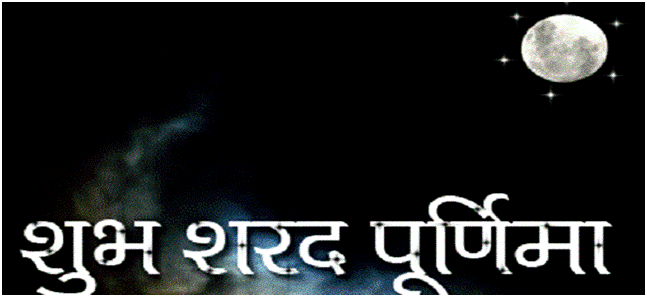Today is the Day whn truth prevail ovr all Evils.
May God removes all Evils from ur life & fill ur life with joy & prosperity.
Happy Dussehra
May God bless you with all success on the auspicious occasion
of Dussahra and you may be capable of defeating all evils of your life.
Happy Vijaya Dashami.
Happy Vijayadashami – Wish this Dussehra bring 3 high in your life.
High Devotion,
Determination
Dedication
which will take you to dream destination.
May this Dussehra,
Light up for you.
The hopes of Happy times,
And dreams for a year full of smiles!
Wish you Happy Dussehra.
Why we celebrate Dussehra?
bcoz ADHARM per DHARM,
JHOOTH per SATYA,
ANYAY per NYAY
or
BURAI per ACCHAI ki vijay ho…
*Happy Dussehra*
Burai par acchai ki jeet !!
Dussehra lata hai ek ummed….
Ravan ki tarah hamare dukhon ka ant ho….
Ek nai shuruat ho ek naye savere k saath…
*Happy Dussehra*
Good Health And Success
Ward Off Evil Lords Blessings
Happy Dussehra Yummy Dussehra
Triumph Over Evil
Joyous Festive Season
Spirit Of Goodness…
Happy Vijaya Dashami!
An auspicious day to start with any good work
It was today that good won victory over bad
May this day clear all hurdels of your life and
start new era of well being.
*Happy dussehra*
JAI SRI RAM May God shower
His choicest Blessings on you
and you win over every hurdle in life!
Happy Dussehra!
Fortunate is the one
Who has learned to admire,
But not to envy.
Good wishes for a joyous Dussehra,
With a plenty of peace and prosperity.
Happy Dussehra.
Troubles-as light as Air;
Love-as deep as Ocean;
Friends-as solid as Diamonds;
And Success-as bright as Gold!
These are the wishes for you and your family on this auspicious day of Dussehra!
Happy Dussehra!
I PRAY THIS DUSSEHRA SHOWERS UPON YOU..
1. SHANTI
2. SHAKTI
3. SAIYAM
4. SAMMAAN
5. SARALTA
6. SAFALTA
7. SAMRIDHI
8. SANSKAAR
9. SWAASTHYA.
*Happy Dassara*
Troubles as light as Air,
love as deep as Ocean,
Friends as Solid as Diamonds,
and Success as bright as Gold…
These are the wishes for you and
your family on the day of DUSSEHRA.
Happy Dussehra!
Celebrate The Victory Of
The Force Of Good Over Evil.
Lets Celibrate An Auspicious
Day To Begin New Thing In
Life.
Happy Dussera.
Long live the tradition of Hindu culture,
as the generations have passed by,
Hindu culture is getting stronger and stronger
lets keep it up.
Best Wishes for Dussehra….
As the candlelight flame
Your life may always be happy,
As the mountain high
You move without shy,
As sunshine creates morning glory
fragrance fills years as Flory,
All darkness is far away
As light is on its way.
Wishing You all a very
Happy Dussehra.
@@@('_')@@@ <) )__/ _/ \_
Meine Ravan Bhej Diya Hai
Ab Aap Apne Mobile Mein
Patakhe Laga Ke Aag Laga Dena.
"HAPPY DUSHERA.
Aptyachi Pan, Fulancha Vas,
Aaj Ahe Divas Khup Khas,
Tula Sarv Sukh Labho ya Jagat,
Premane Bhetuya apan Ya Dasryat.
Wishing You Happy Dussehra!
RAWAN ke dus Sar,
bees Aakhein,
par Nazar Ek hi ladki par,
Aapka Sar ek,
Aankhein do,
par Nazar har ladki par.
Ab batao ki……? Asli Rawan kaun?
Wish u Happy Dussehra!
As Shri Ram kills Ravana
And comes back to people he loves,
As Maa Durga kills Mahish-asura,
And prepares to go back to her heavenly abode,
May these gud-over-evil stories,
Inspire you towards your own victories!
To meet great targets!Aspire & Stretch!
Tide over bad-times!
Make the best of your good-times!
And just enjoy!
Wishing U and your family
A Very Happy Vijaya Dashami & a Happy Dussehra.
May Saraswathi play on your tongue & lips,
Laxmi play on your palms,
Parvathi in your heart,
Durga on your arms,
Wish you a *HAPPY DUSSERA*
This Dusshera, I wish you to develop all the qualities of Lord Rama.
May you be an ideal son, a perfect brother and an idyllic husband!
Happy Dusshera!
Dusshera signifies the victory of good over evil.
May all the evils in and around you vanish by the virtue of the goodness in and around you.
Happy Dusshera!
This Dusshera, I wish you to develop all the qualities of Lord Rama.
May you be an ideal son, a perfect brother and an idyllic husband!
Happy Dusshera!
Dusshera signifies the victory of good over evil.
May all the evils in and around you vanish by the virtue of the goodness in and around you.
Happy Dusshera!
Good Health And Success
Ward Off Evil
Lords Blessings
Happy Dussehra
Yummy Dussehra
Triumph Over Evil
Joyous Festive Season
Spirit Of Goodness…
Happy Dussehra.. !
An auspicious day to start with any good work..
It was today that good won victory..
over bad May this day clear all..
hurdels of your life and start..
new era of wellbeing
Happy Dussehra….!!
May Lord Rama always…
keep showering his blessings upon you….
May your life be prosperous and..
trouble free throughout.
Happy Dussehra.







